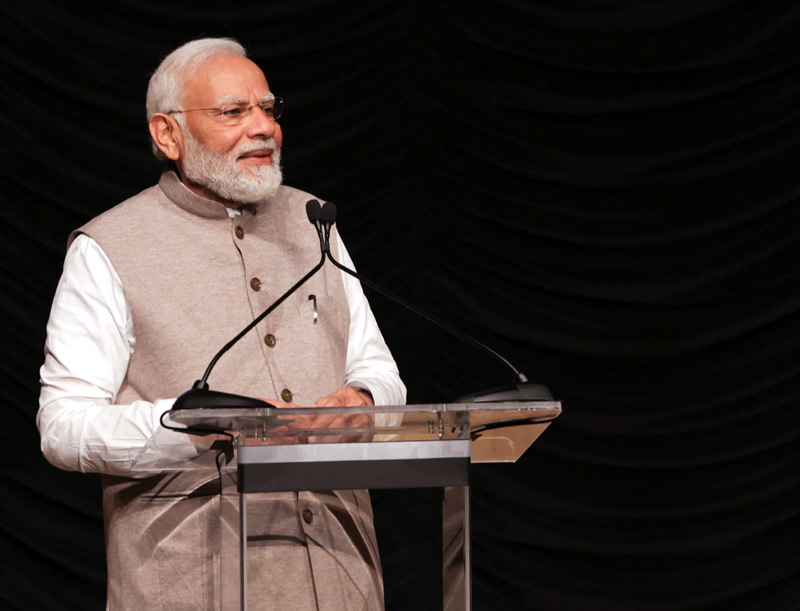
Prime Minister Narendra Modi’s historic visit to the USA has opened a whole new horizon of cooperation between the two countries. The largest and oldest democracies, India and the United States, indeed have numerous mutual interests that form the foundation of their bilateral relationship. Both countries share common values of democracy, pluralism, and respect for individual freedoms. This visit has forged the strongest possible partnership between the two countries in the fight against terrorism and radicalism. The joint statement emphasised the need for concerted action to address cross-border terrorism and expressed their commitment to global peace, stability, and prosperity. India and the United States are inseparable on many counts. Both have committed to combating terrorism and extremism by cooperating more closely in intelligence sharing, law enforcement, and counterterrorism operations to address the global threat of terrorism. Both the countries that were victims of 9/11 and 26/11 themselves have pledged to work in tandem to wipe out terrorism. This visit by the PM has developed a strategic partnership based on shared interests in maintaining peace, stability, and security in the Indo-Pacific region.
The Indian diaspora in the United States, which includes millions of Indian Americans, has played a significant role in strengthening people-to-people ties between the two countries. Cultural exchanges, educational collaborations, and scientific research partnerships further deepen this connection. With its large and diverse population, the Indian diaspora in the USA has become an important bridge connecting the two countries. Notably, several prominent tech giants in the USA have CEOs or other influential figures of Indian origin. Both countries have agreed to more robust economic ties, with bilateral trade of billions of dollars annually and much scope for further mutual investments. They seek to enhance economic cooperation in areas such as trade, investment, technology, innovation, and the development of resilient supply chains.
Another significant area of agreed-upon cooperation between India and the United States is addressing climate change and promoting clean energy solutions. This historic visit has opened up new collaborations on renewable energy projects and clean technology development to reduce greenhouse gas emissions. Both countries have pledged to have further cooperation in space exploration, satellite technology, and earth observation. Collaborative initiatives include joint missions, the sharing of satellite data, and exchanges between space agencies. More academic collaborations and student exchanges between Indian and American universities will pave the way for knowledge sharing, research partnerships, and human resource development. This is a significant aspect for Indian students.
Significantly, the United States is embracing the idea of collaboration with India in the high-tech sector and is now open to sharing its cutting-edge technology for joint production. This extends to various areas such as military jet engines, space exploration, establishing resilient supply chains, fostering stronger business connections, and facilitating smoother visa procedures. The scope of cooperation between the two nations is wide-ranging and encompasses a broad spectrum of possibilities. The Prime Minister’s efforts have resulted in a historic pact between GE Aerospace and Hindustan Aeronautics Limited (HAL) to jointly produce fighter jet engines for Light Combat Aircraft of India, the purchase of General Atomics MQ-9 “Reaper” armed drones by India, and India’s decision to join the Artemis Accords for space exploration. Additionally, computer storage chip maker Micron announced plans to set up a semiconductor assembly and test plant in Gujarat, an unexplored area for India that requires technology transfer to become the electronics manufacturing hub of the world. It’s a milestone achievement and paves the way for India’s giant leap in electronic goods manufacturing.
The dynamic global landscape is witnessing significant changes, including the ongoing conflict in Ukraine, the ascent of China as a prominent global player challenging the USA, and the disruption of supply chains caused by the pandemic. These factors are reshaping the world order and presenting new challenges and opportunities for nations around the globe. PM Modi, during his address to the US Congress, successfully highlighted the challenges being faced by the Indo-Pacific region, which is an area of serious concern for both countries. The importance of a free, open, and inclusive Indo-Pacific region based on international law and ASEAN centrality is key to the peace and stability of the region. Both countries have committed themselves to upholding the rules-based international order and respecting the sovereignty and territorial integrity of states. China’s territorial claims in the South China Sea, where it has built and militarised artificial islands, overlap with the claims of other countries and have been a point of contention with neighbouring countries like the Philippines, Vietnam, Malaysia, Brunei and Taiwan, which have counterclaims in the region. China’s standoff with India in eastern Ladakh is another example of China’s unprovoked aggressive measures. Prime Minister Modi’s visit has resulted in a significant understanding and acknowledgement of India’s viewpoint on China’s expansionist manoeuvres. The recognition and acceptance of India’s viewpoint on these matters, along with the agreement to address them jointly, signify a way forward for a strategic alliance to counter these challenges.

